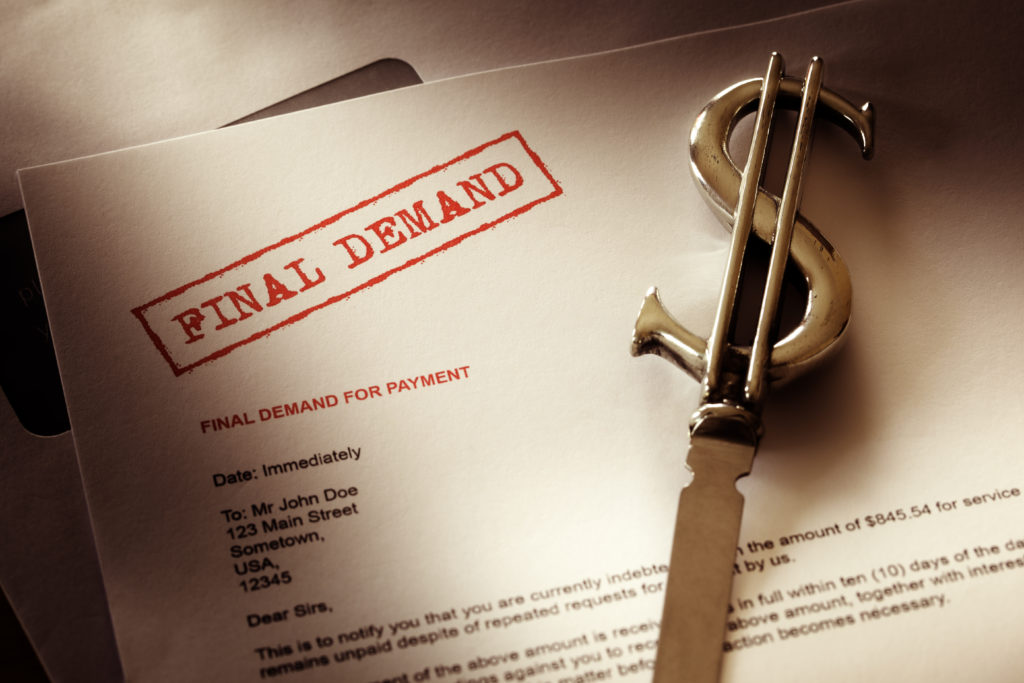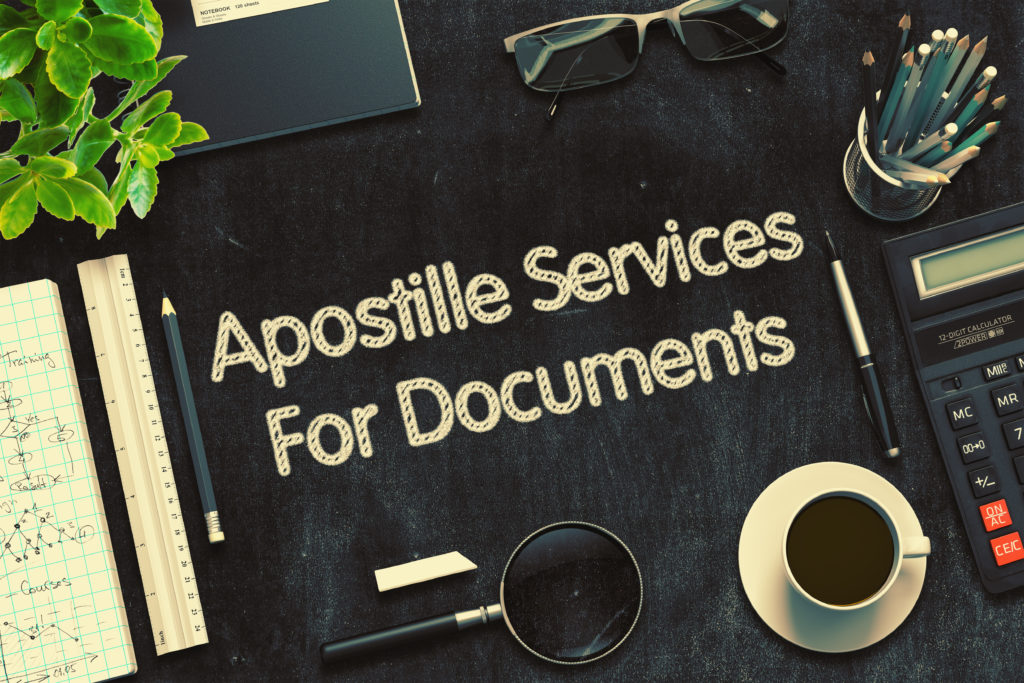It should come as no surprise that life costs money. Sometimes, you may take out a loan to cover big expenses, or simply stay afloat. Borrowing money is a standard part of most peoples lives at one point or another. However, paying off that money is another story. Every now and then a borrower who defaults on their loan payments may receive a demand letter. What is a demand letter? What do I do if I get one? In this article, we will answer all of these questions and more.
What is a Demand Letter?
When someone borrows money (i.e. takes out a loan) there are generally very specific parameters set for paying said money off. Such as:
- The amount of money borrowed
- When full payment is due
- The due dates of each payment
- Any fees or interest charges associated with the loan terms
Unfortunately, sometimes a borrower fails to meet the expectations of their loan agreement. When that happens, the lending party will send a demand letter to the borrower. A demand letter is a formal document sent to borrower requesting an outstanding debt be paid. Now, demand letters do not go in the mail the day after a due date passes. Instead, the lending authority will usually send several other notifications of past due payments. Moreover, some lenders will have representatives call the debtor to collect payment. If these attempts are met with silence, a lender will draw up and send a formal demand letter.
When Do I Send a Demand Letter?
Borrowing money can be a murky exchange. Notably so, when the transaction takes place amongst friends or family. Very often, the borrower may hope, or even expect, for the lender to forget about the transaction. Conversely, the borrower may constantly make empty promises to repay the lender. Perhaps, claiming they are waiting on that one big check or will have the money any day now.
This is where a demand letter comes in. The lender will write a letter detailing the specifics of the loan. Should the debtor not pay what is owed, the lender will elevate the matter to small claims court. This ultimatum raises the stakes considerably. One out of every three demand letters results in speedy delivery of payment. Paying the debt is a far better alternative than wasting time and money going through the court system.
Examples of Demand Letter Causes
Demand letters are sent when a financial debt is owed. For example, if your friend borrows money from you to buy a car and hasn’t yet paid you back.
However, demand letters are also sent in a number of non-loan situations. For example, if a contractor improperly installs wiring in your home. You can send a demand letter requesting that they fix the issue at no further cost to you. Furthermore, demand letters are often used in cases of personal injury. In this case, the demand letter may request retribution from the person or entity that is responsible for the injuries. On the other hand, a demand letter can be used to request aid from an insurance company to cover medical expenses associated with the said injury.
The aforementioned examples are simply the tip of the proverbial iceberg. Demand letters relate to all sorts of different claims and situations.
Demand Letter Sample – How to Write a Demand Letter
To be clear – a demand letter is a big step towards filing a lawsuit. Therefore, the letter is a legal document and should be written accordingly. Here are some best practices when drafting a proper demand letter:
- Include the Details of Debt – This is more than just the amount of money owed. Both the lender and the borrower are likely aware of the situation that led to this letter. However, should the matter end up in small claims court, having a detailed description in the demand letter will help the judge understand, and appropriately rule on, the case
- Be Cordial – Getting to the point where a demand letter is necessary is a bumpy road. More than likely, the lender is frustrated with the borrower. However, keep in mind that people tend to react in a similar fashion to how they are approached. Anger leads to more anger and malice. Therefore, aim to be calm and polite in your letter. You are more likely to be met with a lucrative response.
- Request a Definitive Resolution – Specifically lay out the terms of the letter. How much money is owed? When is the payment due? What services are requested?
- Keep it Professional – Handwritten letters are lovely. Who doesn’t love getting a handwritten card or letter in the mail? However, a demand letter should not be confused with a love note or handwritten exchange with a pen pal from summer camp. A demand letter should be a typed, professional document.
- Take it to the Courts – Not the basketball courts, but the legal courts. The resolution of your demand letter should firmly state you will seek further judicial action if your request is not met. Sadly, demand letters cannot be resolved with a free throw competition.
Word Choice Matters
Anyone has the power to write a demand letter. However, you should strongly consider hiring an attorney to draft the letter for you. Especially if the matter at hand is particularly sensitive and/or personal to you. Having a legally educated, unbias, third-party draft your demand letter protects you (the lender) in the future.
In the event your letter results in court proceedings, a judge will read the letter. Using language that is too harsh or threatening in your demand letter is not warmly received in the judicial system. Therefore, you should consult a lawyer to approve of, or even write, your demand letter. This will help protect you (the lender) from losing your rights in the court process.
Fair Debt Collections Practices Act
Furthermore, your demand letter must request a fair amount of money. Some disgruntled lenders try to tack on exorbitant fees and interest. However, there are federals laws in place to protect borrowers from excess fees. For example, the Fair Debt Collections Practices Act. This is just one example of various federal and state laws in place.
Are you suffering from unprecedented harassment from a debt collector? For example, receiving excessive late night calls or threats. You should consider drafting a Fair Debt Practices Demand Letter.
What to Do When You Recieve a Demand Letter
It is not ideal to be on either end of a demand letter. However, it is definitely more undesirable to be on the receiving end. Below are some steps to take if and when you receive a demand letter.
Do Not Ignore it
To reiterate, a demand letter is a precursor to a potential lawsuit. Therefore, being on the receiving end of one should not be taken lightly or neglected. Your demand letter should request a written response, also known as a response letter. Failure to oblige by the response deadline may result in the initiation of legal proceedings. Interestingly enough, you are not legally required to respond to a demand letter. However, your lack of response will not make the threat of legal action disappear. Additionally, once legal action has been taken, the process is much more difficult to cease. Worse still, a lack of response can reflect poorly on your case should the matter end up in the courts. The lender, or obligee, can argue that they offered a civil resolution to the issue, but it was ignored.
Look for Truth in the Demands
Personal feelings aside, honestly gauge whether or not the obligee’s demands are warranted. Do you, in fact, owe them what is requested? If so, is the amount accurate? Do you agree with the facts of the situation listed? Remember, there are two sides to every story. You have the right to counter and contest a demand letter if the contents are incorrect or overzealous.
Consider the Obligee’s Intentions
Demand letters are ultimatums. Despite their courteous legal demeanor. Unfortunately, sometimes the obligee’s motives are frivolous and selfish. Check with a lawyer if you are unsure whether or not you deserve a demand letter. Paying a one-time legal fee for a lawyer’s help is preferable over a long, drawn-out legal battle in the courts. Furthermore, having an attorney draft your response letter legitimizes your response and ensures the appropriate jargon is used. Be sure the lawyer is aware and understanding of any relevant history to the demand. Essentially, ask your attorney to legally translate your side of the story.
Confirm Receipt
A paper trail is your best friend when defending yourself in a lawsuit. Confirm receipt of your response letter. It is a good idea to send your response letter both digitally (email) and via trackable mail service to the obligees legal representatives. Save a verified copy for yourself as well.
Reaching a Settlement
One in three demand letters results in a settlement, thereby avoiding further legal action. A settlement is an official resolution to a legal dispute. If the demands within the letter are warranted and authentic, this is by far the best case scenario for all parties involved. Finally, a written release will formally close the case at hand.
Written Release
A written release is a formal legal document that releases one party from liability (or debt) to another. A release officially settles disputes. Typically, one party will exchange money or services to clear their name of the claim against them. For example, when a debtor pays back the funds owed to a lender. The written release is only valid if signed, willingly, by both parties. Finally, notarize the written release.
Let’s say, for example, you have a demand letter requesting $1,000 from your neighbor who crashed their car into your fence. Both parties agree to the terms, the neighbor pays what is owed, and a written release is signed and notarized. What happens if the fence repairs end up costing $2,000? You cannot go back and get more money from your neighbor. They have been formally, legally released from this matter. Unless you are able to prove plausible fraud or misrepresentation in the original agreement.
Speaking of fraud, if either party violates the terms of the agreement, the affected entity can file a lawsuit for any potential damages.
Elements of a Written Release
Specifics aspects of written releases vary depending on your case and the state in which the agreement took place. However, the basic components of a written release are:
- Names and contact information (address, telephone, email) of both parties involved
- A brief, but detailed description of the original dispute
- The date of the agreement
- A statement of agreed-upon terms (the amount of money being paid, services that will be performed, etc in exchange for the release of liability)
- Various additional provisions. Such as a statement confirming that the release extends to any and all aspects regarding this dispute, current or future
- A written statement that the release confirming that all matters pertaining to this issue cease here. For example, the releasor cannot go forth and demand the same debt from the releasee’s spouse or family members
- The signatures of both parties. Legally, only the releasor is required to sign. However, it is always best for both parties to agree and officially sign the written release
- A proper notarization signature and stamp (not legally required in most states, but a very smart step)
Notarization? What is that?
You likely noticed the mention of “notarization” once or twice in this article. If you are not familiar with this term, notarization is the formal witnessing of signatures on documents of great importance. An unbias third party, or a “notary”, will verify the authenticity of the signatures. This happens in a few steps:
- The notary will confirm the signer’s identity with the presentation of a photo i.d. (typically a valid drivers license or passport)
- Once identity is confirmed, the notary will ask the signer if they understand the document (in full) and are choosing to sign willingly
- In some cases, a notary will require the signer verbally pronounce an oath confirming the truth of the document’s contents. The signer may choose to pronounce an affirmation instead. An affirmation bears the same weight but does not make a promise to God or a higher power. Oaths and affirmations are required in a jurat notarization
- Finally, the notary themselves will sign and stamp the document. Every notary’s stamp is unique to them. However, all notary stamps contain the same elements: the name of the notary, their state of commission, and when their commission expires
Keep in mind that notary rules and regulations vary by state. Check with your local notary about your local laws regarding notarization.
Notary vs. Attorney
It is vital to understand that a notary cannot act as an attorney. Therefore, if you have any questions or curiosities about the document at hand, check with your lawyer before visiting a notary. A notary cannot give legal advice regarding documents they are notarizing.
An attorney can, however, be a certified notary. It is not uncommon for lawyers to become notaries to expedite notarizations within their law firm. They simply cannot notarize a document in which they had any legal role.
On the other hand, in Hispanic cultures, they have the “notario puplico”. While directly translated as “notary public”, their roles are vastly different. A notario publico undergoes a minimum of five years of vigorous legal training. Whereas a notary public in the United States simply takes a three-hour training course. Furthermore, some states do not require notaries complete any training at all. Finally, a notario publico is legally allowed to draft and advise upon documents they are notarizing. Conversely, a notary in America does not have this legal ability.
Where to Find a Notary
Documents commonly require notarization. From written releases and demand letters to the joyous paperwork involved with buying your first home, you will likely need a notary. Fortunately, there are over four million notaries in the United States alone. Therefore you should have no trouble finding one near you. Some places to start your search:
- The public library – That’s right! Your local library houses more than old DVD’s of eighties TV shows. Many libraries offer free or low-cost notary services
- Local businesses – Car dealerships, real estate offices, and insurance agencies, to name a few! These companies often need notary services for internal business purposes, so they often keep a notary on staff.
- Quick note: even if you are not a client/customer of these establishments, they have to honor your notarization request. Notaries are representatives of the secretary of state. Therefore, they serve the public. They are, however, entitled to charge you a fee for their service. Most states legally cap notary charges at $10 per signature or less
- Credit Unions and Banks – If you are an account holder at a bank or credit union, you likely qualify for free notarization services there
- Where you Work – If you are an employee at a larger company, you can likely access a notary at your office
- Mobile Notaries – Chinese food isn’t the only thing you can have delivered right to your door. Bigger markets commonly have a number of notaries on-the-go who come to you! In addition to signing fees, mobile notaries charge a travel fee. However, isn’t it worth it to save irreplaceable time sitting in traffic?
Naturally, the availability of notaries varies depending on your place of residence. Do your due diligence to find the best notary in your area.
Types of Demand Letters
As previously mentioned, demand letters can be used in a number of different situations. The language used in the letter varies depending on the case at hand. Eforms.com has a comprehensive list of demand letter templates. Some of which include:
- 30-Day Demand Letter – As the name suggests, this letter gives the debtor 30 days to pay their outstanding debt
- Refund Demand Letter – Dissatisfied with a product or service you purchased? A refund demand letter may help you recoup your costs if your request for a refund is valid
- Personal Injury Demand Letter – As previously mentioned, you can send a demand letter requesting compensation regarding expenses from personal injury. This type of letter requests damages from a third party responsible for the injury
- Breach of Contract Demand Letter – A contact is a legal agreement between two parties. Often times, a contract will involve an exchange of money or services. If either party does not fulfill their contractual obligations, a breach of contract demand letter can be useful
- Child Support Demand Letter – This type of demand letter is for, you guessed it, failure to pay child support
- Compensation Demand Letter – Have you ever worked a job and did not get paid as promised? Whether you didn’t get paid at all or received less than originally agreed upon, you may benefit from this type of letter
- Response to Demand Letter – For when you are the recipient of a demand letter
- … and more!
As discussed, these are just a few examples of when and how demand letters may be utilized! Follow the hyperlink of each type of letter to learn more about the specifics of each.
What is a Demand Letter: In Summary
In a demand letter, the affected party formally requests owed money or services from another party or entity. A demand letter is a preamble to a potential lawsuit. Demand letters are serious, legal documents and should not be ignored. In the event both parties reach an agreement (aka settle) a written release formally closes the case. Otherwise, the dispute will lead to a lawsuit and cost valuable time and money at the expense of both parties. Save yourself some trouble and consult a lawyer about local laws and regulations specific to your case.
Sources
https://www.investopedia.com/terms/d/demand-letter.asp
https://www.nolo.com/legal-encyclopedia/demand-letter-settle-dispute-30105.html
https://www.nolo.com/legal-encyclopedia/free-books/small-claims-book/chapter6-5.html
https://www.nolo.com/legal-encyclopedia/what-to-do-when-you-receive-a-demand-letter.html
https://www.nationalnotary.org/knowledge-center/about-notaries
https://www.thebalanceeveryday.com/where-to-notarize-affidavit-896914
https://www.notarypublicstamps.com/articles/what-is-a-notario-publico/
https://www.legalzoom.com/articles/the-dos-and-donts-of-writing-a-demand-letter
https://en.wikipedia.org/wiki/Settlement_(litigation)




